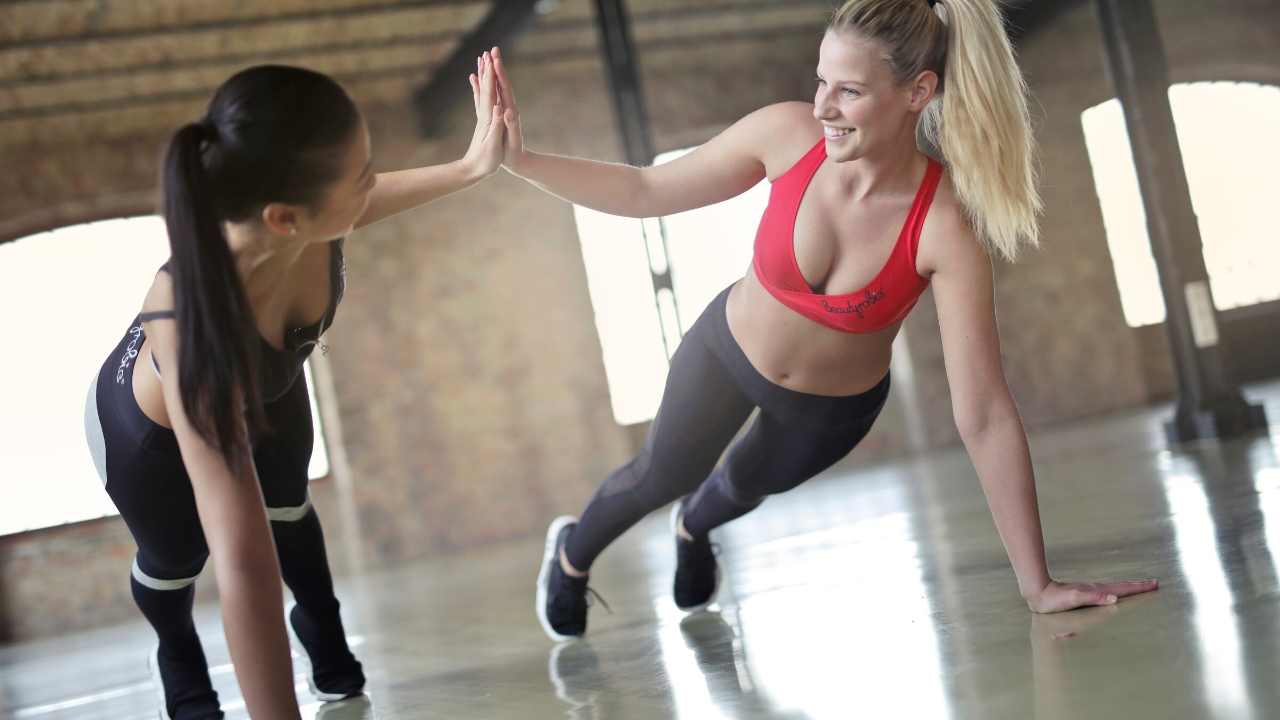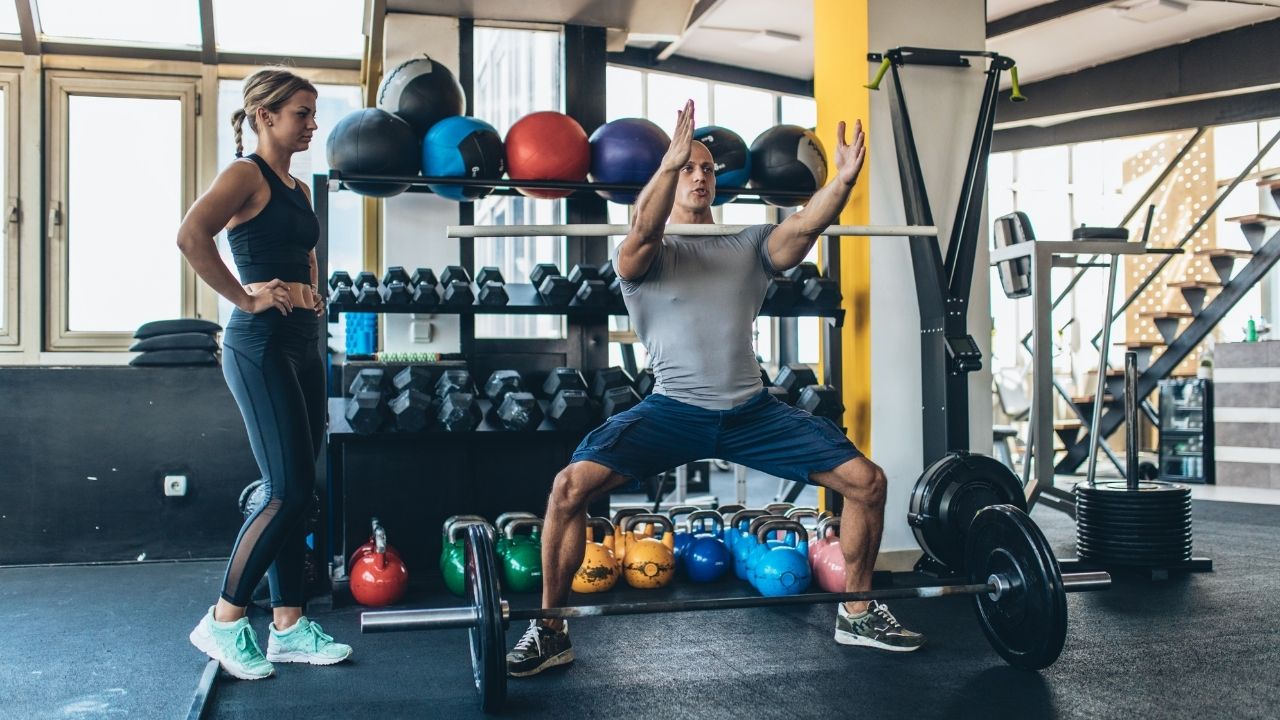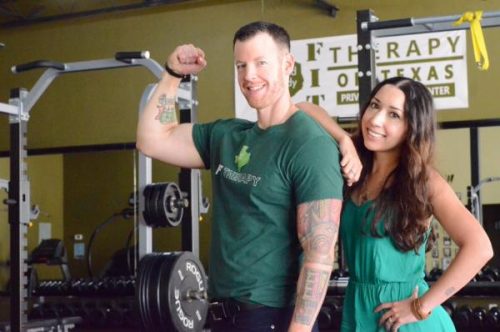
You can perform a full-body medicine ball workout by standing with your feet shoulder width apart, the ball in front of and your arms at your sides. Next, lower the body into a squat while moving your right foot forward. You should ensure that your right heel is in line with the toes on your left foot. Keep your body straight while holding the medicine ball and your chest in line to your knees. Now, lower your hands so that the medicine balls are in front of your body. Then, drape the medicine balls down both sides of you.
Start by standing with your feet hip-width apart. Place the medicineball in front your chest. Keep your spine straight and press your hips backward. Continue to lower yourself until you feel a slight tension in your legs. Continue to lower your hips until you feel tension in your legs. Next, press your heels into the floor with your feet. You should repeat this motion between 12 and 15 times. Do not fall too low. Throughout the exercise, keep your core engaged.

Start the exercise by standing with your legs spread apart. Stand with your legs straight out in front of the medicine balls. Step back with your right leg, and then step back with your left leg. Lower your hips to your left side and bend your knees. Now, rotate your hips toward your right leg. This exercise can be done in three sets of twelve reps. Finish the exercise by switching your legs and repeating the steps.
Next, you will need to warm up. Plant your feet wide and twist your trunk. You should not move your legs, but twist your torso as you walk. Hold the medicineball in your hands with both hands, and then place it at your chest. Next, squat down and raise your chest. After you've done the warmup, go on to the full-body workout using the medicine balls.
A medicine ball lunge is another full body exercise that requires a full-body workout. To perform the exercise, you should stand with your feet hip-width apart. Then, you should bend your right leg to 90 degrees. Once you've completed a lunge, you should reach for the ball inside of your right foot with your left hand. Once you are standing, lift the medicine ball up to your chest and then repeat the motion on the left side.

Once you've completed the standing exercise, you can move onto the seated exercise. Begin by placing your medicine ball in front on your chest. Bend your knees, then hold the medicine-ball above your left shoulder. For 30 seconds, repeat the same rotation. You can rest for 10 seconds before moving on to the next stage. Sitting down, you can also do a full body medicine-ball workout. Lie faceup on the floor with your feet off the floor. Turn your hip bones, and then keep your body centered.
FAQ
What are 10 healthy lifestyle habits?
-
Eat breakfast every day.
-
Don't skip meals.
-
Be balanced.
-
Get plenty of water.
-
Take care of your body.
-
Get enough rest.
-
Avoid junk food.
-
Daily exercise
-
Have fun
-
Make new friends
How can I get enough vitamins
Most of your daily vitamin requirements can be met by diet alone. Supplements are available if you are deficient. A multivitamin supplement can provide all the vitamins you require. You can also buy individual vitamins in your local drugstore.
If you are concerned about getting enough nutrients, talk to your doctor about what foods contain the best sources of vitamins. For example, dark green leafy vegetables such as spinach, broccoli, kale, collard greens, turnip greens, mustard greens, bok choy, romaine lettuce, arugula, and Swiss chard are rich in vitamins K and E. Other good sources include oranges, tomatoes, strawberries, cantaloupe, carrots, sweet potatoes, pumpkin, and squash.
Ask your doctor if you're not sure how many vitamins you should take. The doctor will determine the proper dosage based upon your medical history as well as your current health.
How do I find out what's best for me?
Listen to your body. Your body knows what you need when it comes time to eat, exercise, and get enough rest. Your body will tell you what to do so that you don't go overboard. Listen to your body and make sure you're doing everything you can to stay healthy.
What can I do to lower my blood pressure?
The first thing you need to do is find out what causes high blood pressure. Then you need to take steps to reduce this cause. This could be as simple as eating less salt, losing weight, taking medications, etc.
Make sure you're getting enough exercise. You can also walk if you don’t have the time.
A gym membership is a good idea if you don't like how much exercise your doing. You will probably join a gym where you can meet other people with similar goals. It's easier to stick to an exercise routine when you know someone else is going to see you at the gym.
Is cold a sign of a weak immune response?
It's been said that there are two kinds of people in the world; those who love winter and those who hate it. But whether you love or hate it, you may find yourself wondering why you feel so lousy when it's cold out.
The answer lies in the fact that our bodies are designed to function best during warm weather. Our bodies were designed to thrive in hot weather because this is where the majority of our food sources are.
Now, however, we live in a completely different environment to how our ancestors lived. We spend more time indoors and are often exposed to extreme temperatures (cold or heat) and eat processed foods rather than fresh.
Our bodies aren’t accustomed to such extremes. This means that we feel tired, sluggish and even sick when we venture outside.
There are many ways to avoid these side effects. One way is to make sure that you stay well-hydrated throughout the day. Water is essential for your body to function properly and eliminate toxins.
You must also ensure that you are eating healthy foods. The best way to maintain your body's optimal temperature is by eating nutritious food. This is particularly helpful for anyone who spends long periods of time inside.
Finally, consider taking a few minutes each morning to meditate. Meditation can relax your mind and make it easier manage stress and illness.
How can you live a healthy life?
A healthy lifestyle means eating right, being active, getting enough sleep, managing your stress levels, and having fun. Eating well means avoiding processed foods, sugar, and unhealthy fats. Exercise burns calories and strengthens the muscles. You can improve your memory and concentration by getting enough sleep. Stress management is a way to reduce anxiety levels and depression. Fun is key to staying young and vibrant.
Why does our weight change as we get older?
How do I know if my bodyweight changes?
Weight loss happens when there is less muscle mass and more fat. This means that calories must be consumed at a rate greater than energy. Low activity levels are the most common cause for weight loss. Other factors include stress, illness and pregnancy. If there is more body fat than muscle mass, then weight gain can occur. This happens when people consume more calories than they burn during the day. There are many reasons for this, including overeating and increased physical activity.
We eat less calories than we burn, which is the main reason our bodies lose weight. Regular exercise increases metabolism, which means that we burn more calories per day. However, this doesn't mean that we'll necessarily get thinner; what matters is whether or not we're losing fat or gaining muscle. If we're burning more calories that we consume, we'll lose weight. But if we're consuming more calories than we're burning, then we're actually storing them as fat.
As we age, our ability to move around is slower and we are less mobile. We also tend not to eat as much food as we used to when we were younger. We tend to gain weight. On the other hand, we have more muscle mass and look larger than we actually are.
Without regularly weighing yourself, it is impossible to gauge how much weight you have lost. There are many different ways to measure your weight. You can also measure your waist, hips or thighs. Some prefer to use bathroom scales, while others prefer tape measures.
You can track your progress by weighing yourself at least once per week and measuring your waistline every month. You can also take pictures of yourself every few months to see how far you've come.
You can also find out how much you weigh by looking up your height and weight online. If you're 5'10' tall and weigh 180lbs, you'd likely weigh 180lbs.
Statistics
- According to the 2020 Dietary Guidelines for Americans, a balanced diet high in fruits and vegetables, lean protein, low-fat dairy and whole grains is needed for optimal energy. (mayoclinichealthsystem.org)
- WHO recommends reducing saturated fats to less than 10% of total energy intake; reducing trans-fats to less than 1% of total energy intake; and replacing both saturated fats and trans-fats to unsaturated fats. (who.int)
- In both adults and children, the intake of free sugars should be reduced to less than 10% of total energy intake. (who.int)
- WHO recommends consuming less than 5% of total energy intake for additional health benefits. (who.int)
External Links
How To
What does "vitamin" actually mean?
Vitamins can be described as organic compounds found in food. Vitamins help us absorb nutrients from foods we eat. Vitamins cannot come from the body so food must provide them.
There are two types of vitamins: water soluble and fat soluble. Water-soluble vitamins dissolve readily in water. Examples include vitamin C,B1 (thiamine), B2 (riboflavin), B3 (niacin), B6 (pyridoxine), folic acid, biotin, pantothenic acid, and choline. Fat-soluble vitamins can be stored in the liver or in fatty tissue. These include vitamin D, E and K, as well as beta carotene.
Vitamins are classified according their biological activity. There are eight major categories of vitamins.
-
A - vital for healthy growth.
-
C - vital for proper nerve function, and energy production.
-
D - necessary for healthy bones and teeth.
-
E - needed for good vision and reproduction.
-
K – Required for healthy nerves & muscles.
-
P - Vital for strong bones and teeth.
-
Q - aids digestion and absorption of iron.
-
R - Red blood cells are made from red blood cells.
The recommended daily allowance (RDA) of vitamins varies depending on age, gender, and physical condition. The U.S. Food and Drug Administration has established the RDA values.
For adults 19 years and over, the RDA of vitamin A is 400mg per day. Because it is essential for the development of the fetus, pregnant women should consume 600 micrograms per daily. Children ages 1-8 require 900 micrograms per day. Babies under one-year old require 700 mg per day. Between 9 and 12 years of age, however, this drops to 500 mg per day.
Children between the ages 1--18 years old who are overweight or obese require 800 micrograms per Day, while those who are overweight or obese need 1000 micrograms. To meet their nutritional needs, children underweight and obese require 1200 micrograms a day.
2200 mg of vitamin A per day is required for children aged 4-8 who have been diagnosed by anemia.
2000 micrograms are required daily for good health in adults over 50. Women who are pregnant or breastfeeding need 3000 micrograms per day due to increased nutrient requirements.
Adults over 70 need 1500 micrograms daily, as they lose 10% of their muscle every ten years.
Women who have been pregnant or are lactating require more than the RDA. Pregnant women require 4000 micrograms daily during pregnancy, and 2500 micrograms every day after birth. Breastfeeding mothers need to consume 5000 micrograms every day when breastmilk has been produced.